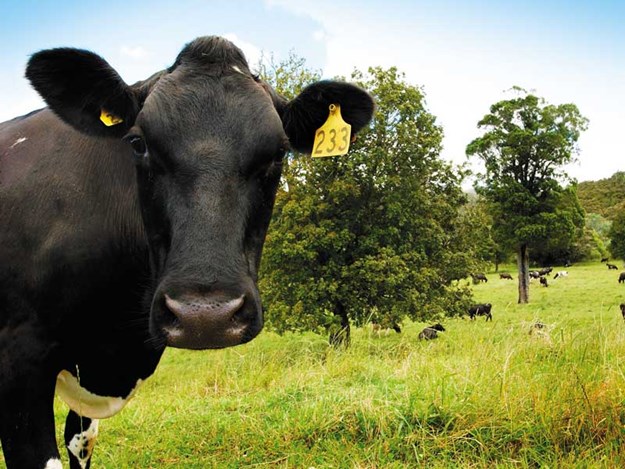Farm advice: Keep your cows cool this summer
Cows affected by heat stress may be irritable and lethargic, as well as produce less milk as they consume less feed, so it’s important to keep them cool when the mercury starts to rise
No one likes being too hot, and cows are no exception. Some of you may be surprised to know that when temperatures start to feel nice and pleasant for us, it’s actually already too hot for our cows.

Research has found that cows are most comfortable in temperatures between four and 20 degrees Celsius. So, their comfort zone is actually around 10 to 15 degrees lower than ours. This means when temperatures start to get in the mid-20s, let alone near the 30s, our cows are increasingly at risk of experiencing heat stress.
Cows affected by heat stress may be irritable and lethargic, as well as produce less milk as they consume less feed, so it’s important to keep them cool when the mercury starts to rise.
With that in mind, now is a good time to come up with a plan to keep your cows cool this summer if you haven’t already prepared one.
We often focus on ensuring we have a plan from a feed perspective, but it’s equally as important to keep in mind the impact heat can have on our cows’ wellbeing.
While we can easily grab an ice-cream or ice-cold bevy, slap on a hat and avoid the sun, it can be a bit more challenging for us to keep our cows cool.
Tactics to minimise heat stress

Those of you without trees on your farm may be thinking, "What can I do?" Trees are obviously a great long-term option, and I know some of you have begun planting for shade and shelter, or thinking about it, which is great. But the reality is they can take a long time to grow.
In the meantime, if you have only limited or even no trees on your farm, there are a few simple, practical things you can do to help alleviate the effects of heat on your cows that don’t require a huge investment, or time.
Consider changing your milking time to earlier in the morning or later in the afternoon so your cows aren’t having to walk to and from the milking shed during the heat of the day. You may even like to consider going to once-a-day milking.
If possible, try putting your cows in paddocks closer to the milking shed during the day so they have less distance to walk, and allow them to take their time. No one likes exercising in the heat; I know I don’t.
Installing a temporary shade cloth at the milking shed or over off-paddock facilities can also provide much-needed relief for your cows from the sun’s rays. Sprinklers over the dairy yard to wet the cows’ coats, and fans, are another option you may like to consider.
Your cows will be consuming more water to keep cool, so extra troughs in paddocks, at the milking shed and along races won’t go amiss. Also, I know it should go without saying, but remember to check troughs regularly to ensure they’re clean, and to check flow rates are high enough so there isn’t a risk of them ever running low, as lactating cows require more than 100 litres of water a day.
As many of you may know, feed with a high fibre content can increase the heat of fermentation in the rumen, boosting the heat load on the cow. If high-fibre supplements feature in your cows’ diet, you might like to consider feeding them at night when it’s cooler.
These are just a few short-term options you may like to consider to keep your cows cool this summer. But I’d encourage you also to start exploring your long-term options, especially given climate-change forecasts suggest our summers are set to become longer, hotter and drier.
Trees are an obvious choice and the "Trees for shade" guide on our website is a great starting point for coming up with a plan. The guide is available at dairynz.co.nz/trees-on-farms.
For more information on how to mitigate the risk of heat stress to your cows, visit dairynz.co.nz/heatstress.
Farmer tips to prevent heat stress:
North Canterbury dairy farmer James Daly is no stranger to farming in hot and dry conditions. He has been farming in Cheviot, which typically experiences scorching summers, for the last four seasons.
He says there are "lots of little things" farmers can do to keep their cows cool. "The main thing is to make sure they have plenty of water available. That’s the most crucial thing. I’ve put in extra troughs for that reason."
He also recommends checking water pressure to troughs to ensure they fill up quickly.
On scorching days, he also milks later, to avoid the heat. "It doesn’t hurt to milk a bit later, so you’re avoiding milking at 2-3pm during the heat of the day."
James’s farm has some natural shelter, but he is looking at doing a bit more planting in the near future to provide his cows with more shade.
"If we know it’s going to be hot, we also put cows in sheltered areas. We try to do that as much as we can, but it often depends on the amount of feed available in those paddocks." He says sprinklers in yards are another good option, and he’s looking to install these in the near future.
Keep up to date in the industry by signing up to Farm Trader's free newsletter or liking us on Facebook


.jpg)
.jpeg)

.jpg)
.jpeg)
.jpg)
.jpeg)
.jpeg)







